
After 11 straight days of rain, on Monday morning, I found myself in a generally-unfit-for-human-consumption mood. It is challenging to remain cheerful and optimistic when you are never quite dry, keep a constant chill, all you packed was a thin rain coat, short sleeved shirts and summer 3/4 pants but the locals are wearing sweaters, puffer jackets, and jeans, the train you rushed to the station to catch is cancelled and you are over an hour delayed and re-routed twice(!), and you are absolutely unable to understand the native language at all (can’t even read it) so loudspeaker announcements and lighted information boards are useless. Thankfully, and I will say it again, the locals are very nice and helpful and they speak English very well. Another nice bonus is: if you already have tickets but your train is cancelled, you simply take the next train(s) and all associated connections and don’t worry about it. As long as you are still headed in the same direction, your tickets are good and you should hopefully, eventually, get there. Don’t pay to reserve a specific seat though, because in the event of re-routing, you don’t get an assigned seat and may have to change at every stop. Although challenging, navigating the rail system wasn’t as troublesome as simply walking. Honestly, I expected to have difficulty navigating the cobblestone streets with roller bags, but I did not anticipate slogging through the mud on mostly unpaved pathways and grassy fields in my new summer walking sandals while carrying my heavy bags. Still, we somehow made it to Roskilde and the Viking Ship Museum a couple hours before it closed.


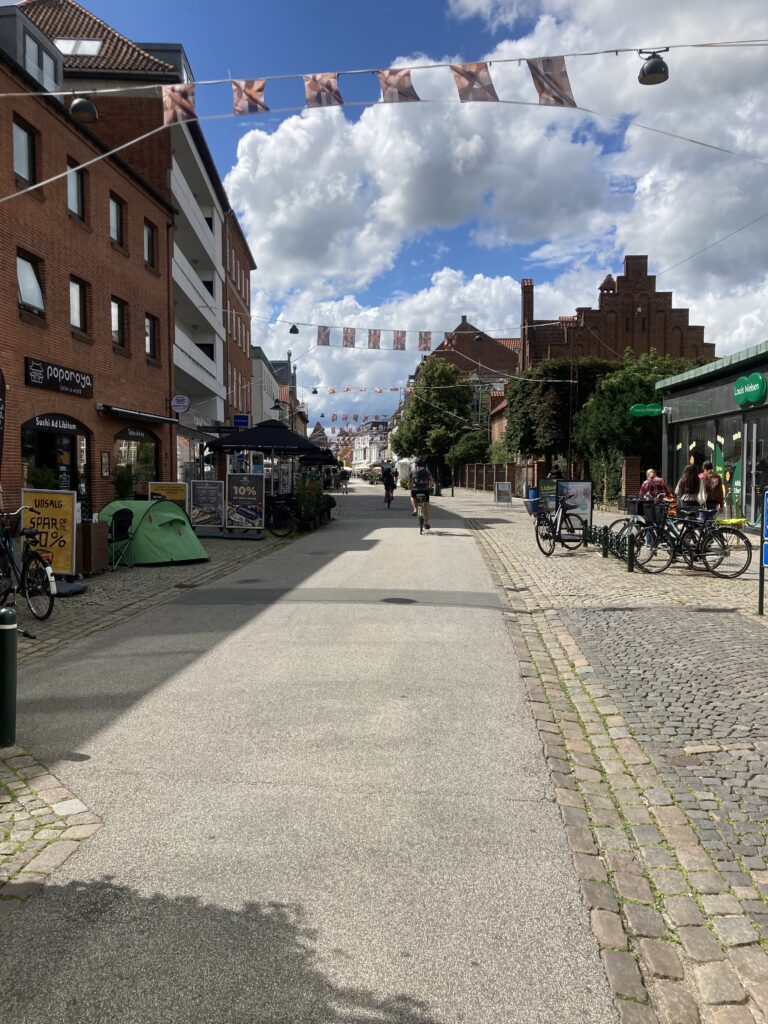
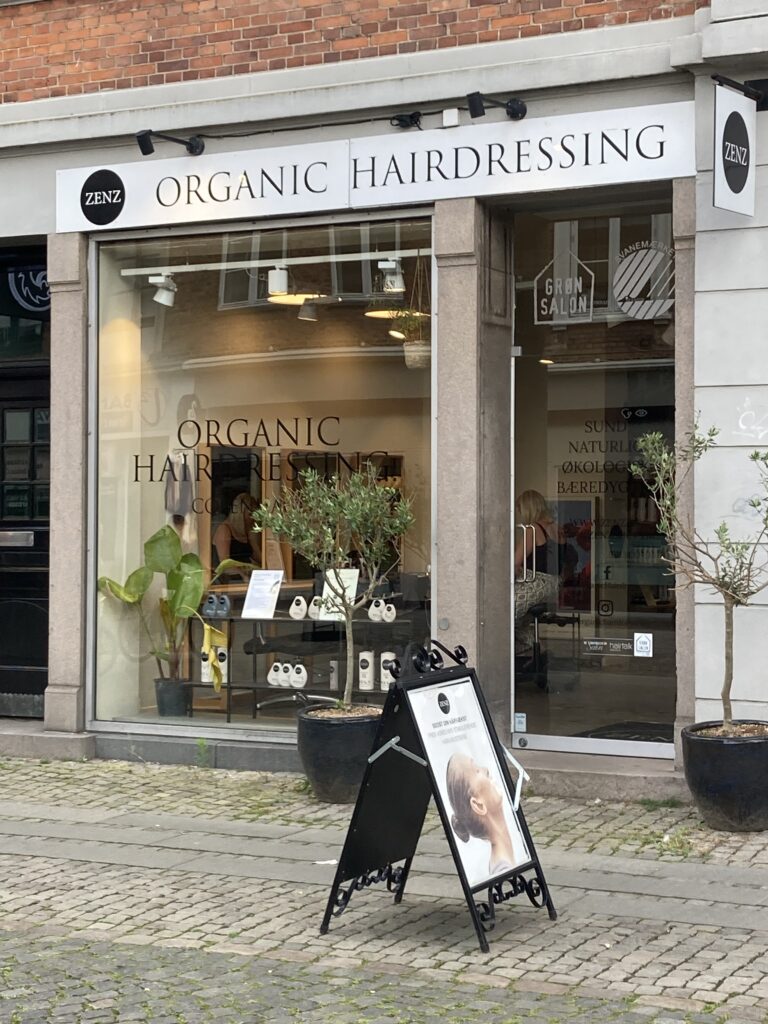

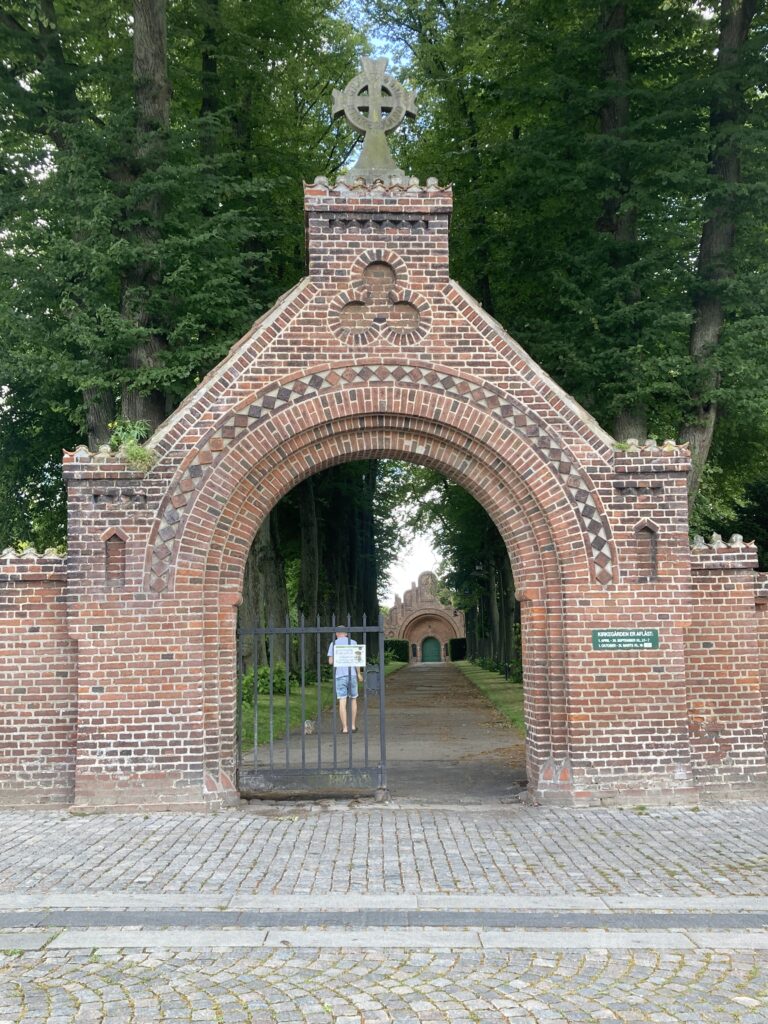



In any regard, Roskilde is a small town located on the island of Sjælland (Zealand) about 45 minutes to the south and west of Copenhagen.
(NOTE: In case you didn’t know, Denmark is made up of about 1400 different islands; of which only about 400 are actually named.)
Roskilde is one of Denmark’s oldest cities and was very important during the Viking Era (8-11 centuries). Harald Bluetooth proclaimed Roskilde the capital of Denmark when he founded it around 980 AD. He moved the location from Jelling when he realized he needed a more strategic position in the kingdom of islands, and he built both a royal residence and a church there. Until the early 20th century, Roskilde was part of the main trade route leading to Copenhagen, but when ships got too big to navigate the Roskilde fjord, industry started moving to other harbors. Then in the 1960s, there was considerable excitement in Roskilde when marine archaeologists discovered the remains of Viking ships dating back to 1030 AD. Turns out the Vikings had sunk at least five of their fleet, the Skuldelev ships, in the fjord that leads to Roskilde harbor as a way of defending the city. The sunken ships rendered the waters very shallow and difficult to navigate so that all except the low-riding Viking boats would have been prevented from entering port. These five ships became the start of the Viking Ship museum in Roskilde and the reason why we were visiting the little city.


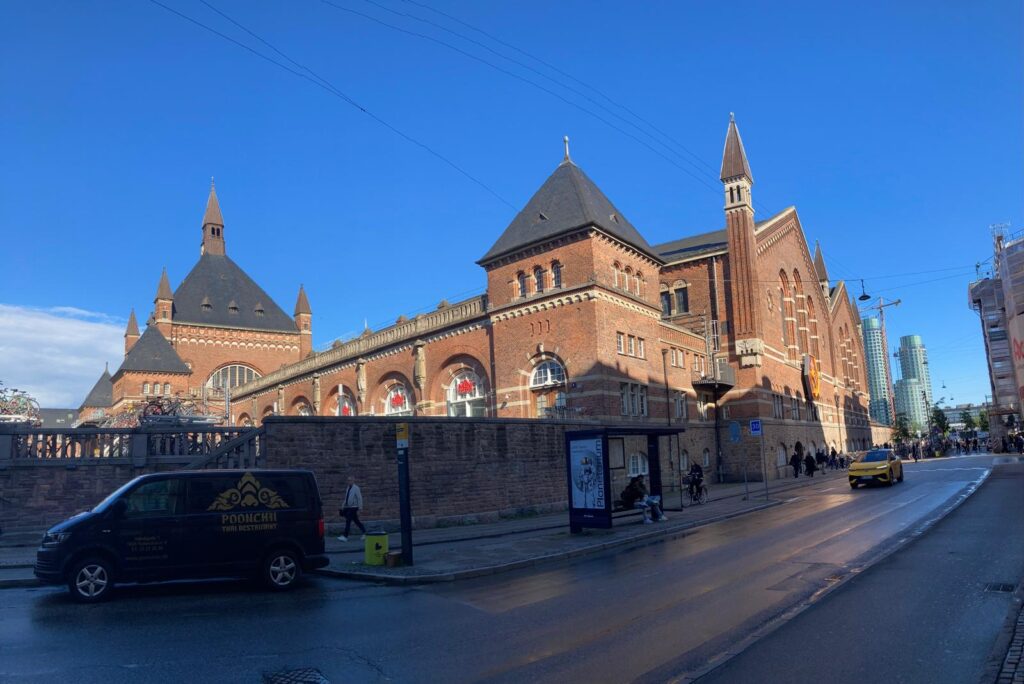





Birgitte from our B&B in Jelling had suggested we visit the cathedral in Roskilde and see where Harald is buried. It’s such a massive structure central to the town that you would have a difficult time NOT seeing it and the Roskilde Palace next door. We were in a bit of a rush to get to the museum so we only cruised by the outside as we bounced our luggage across the cobblestoned square. Afterwards, we were so exhausted, and it was, again, raining, so we did not go back to it. Neither of us are passionate church-tour enthusiasts, but this was definitely a miss. The cathedral of Roskilde is arguably the most important church in Denmark. It has long been the Royal family burial site and almost every generation has added something significant to the church building itself. As such, it is a masterpiece of 800 years worth of architecture and one of the earliest examples of Gothic style in brick in all Scandinavia. I would have liked to have seen the rooms that were added by previous monarchs, if nothing else.








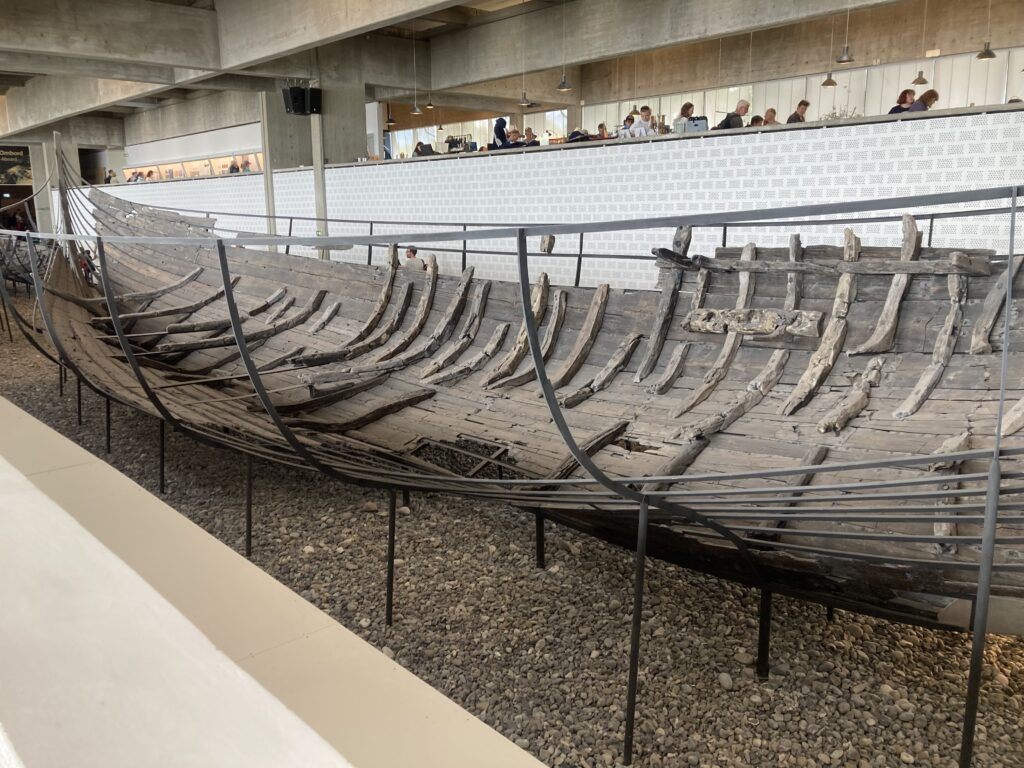




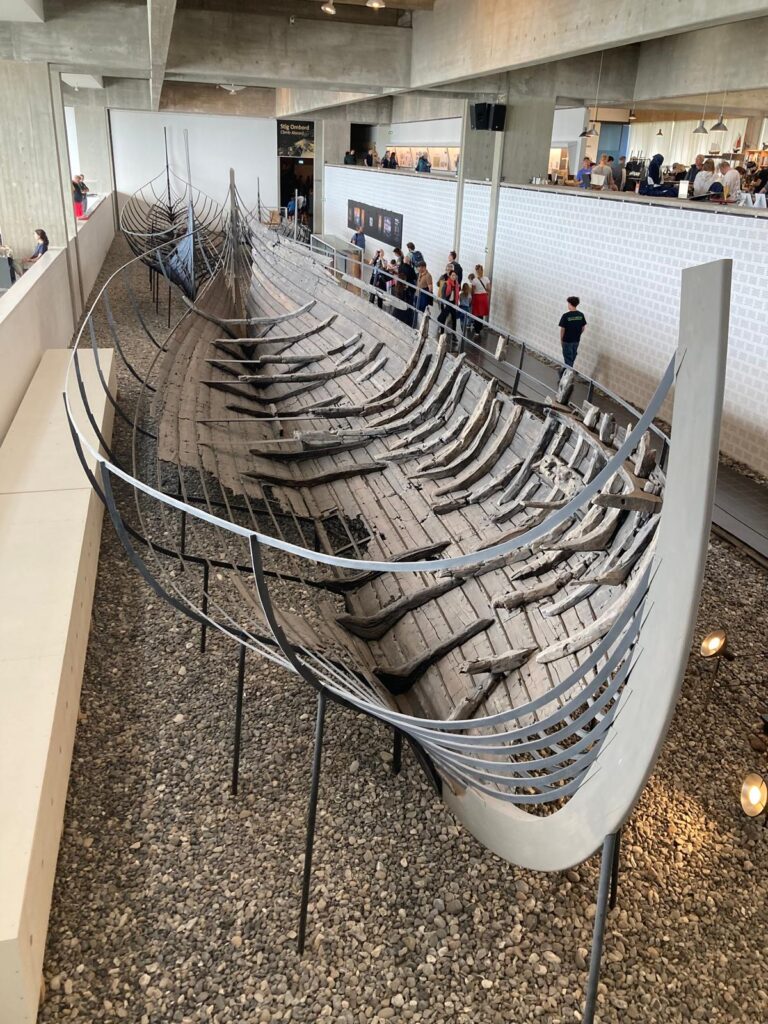



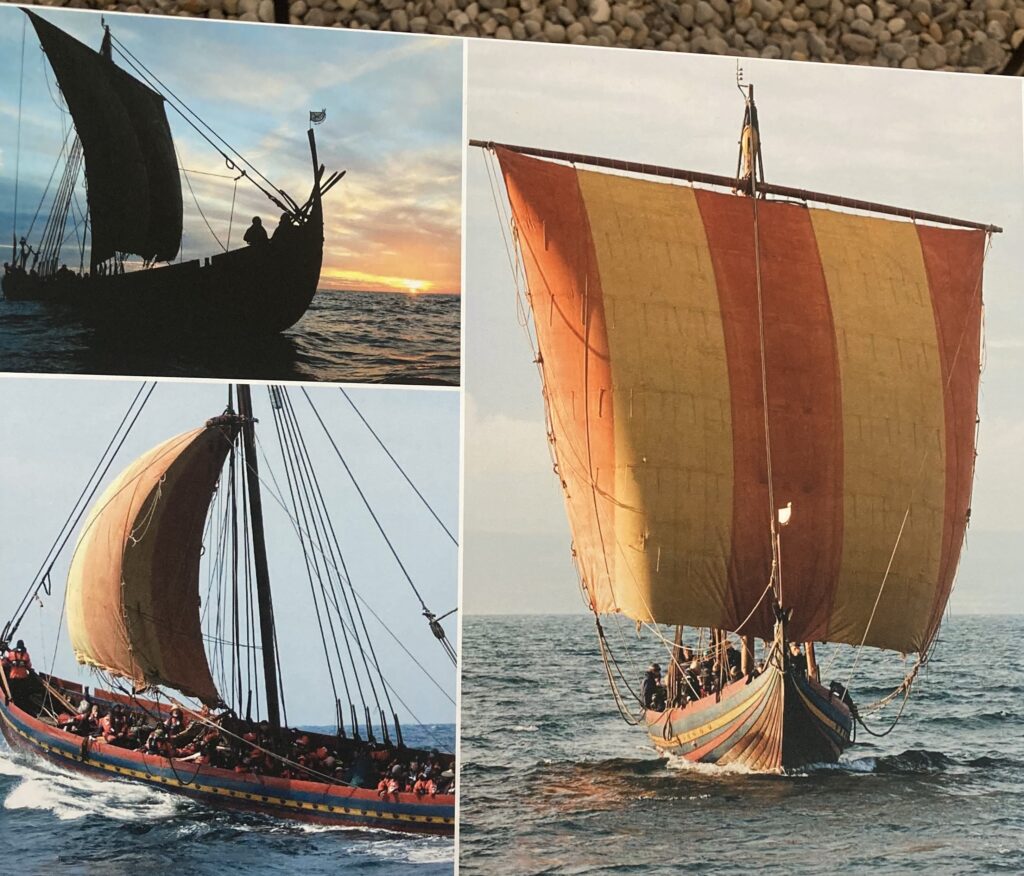
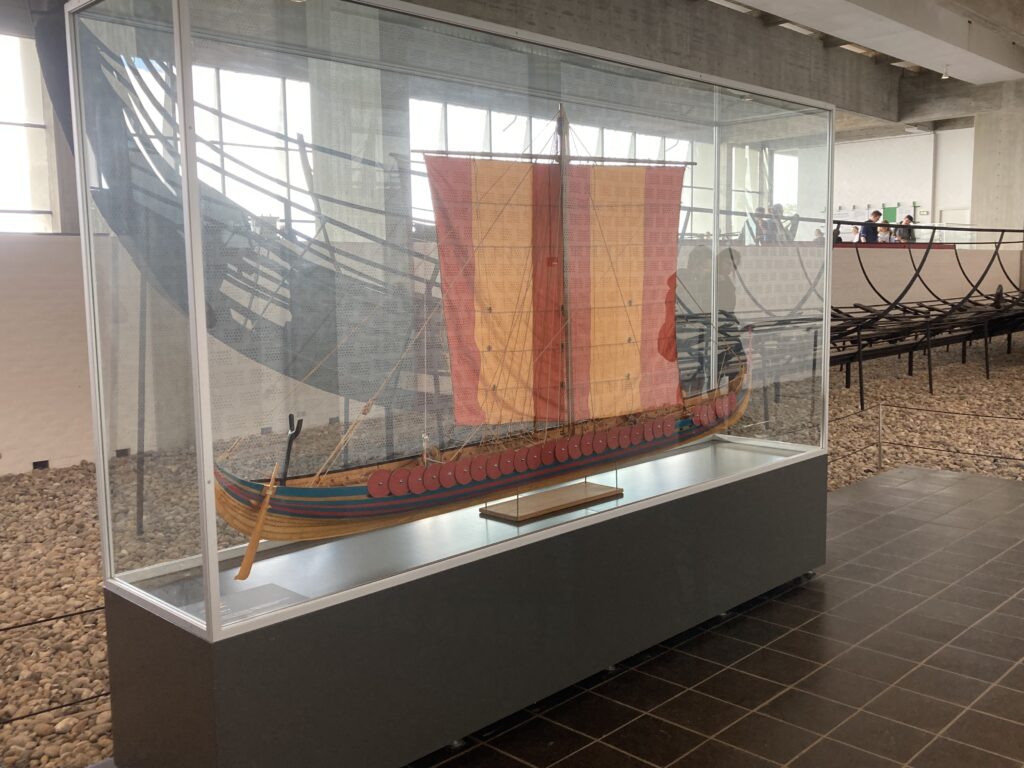


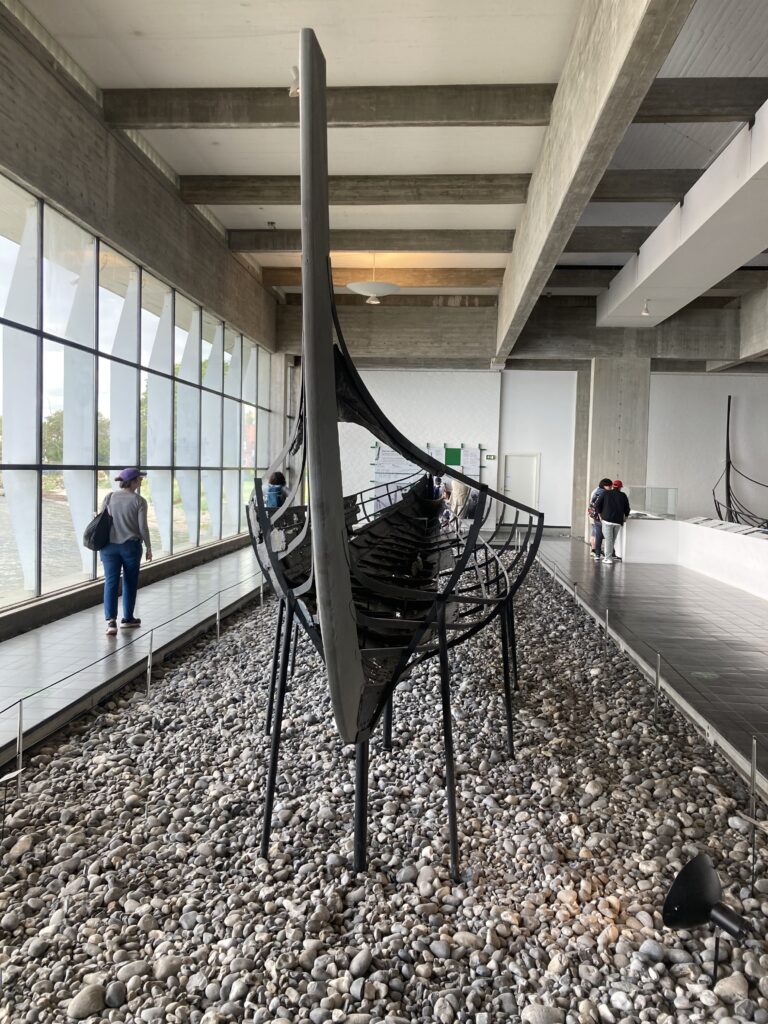

The five Viking ships removed from the Roskilde fjord over 60 years ago, preserved with propylene glycol, and eventually re-assembled, are on display in the massive “Ship Hall” at the museum. The ships range from the famous Longship and Warship (as long as 50 feet) to smaller fishing vessels and ferry boats (as short as 10 feet). The museum actively undertakes experimental marine archaeology and is globally renown for their work in this area. Each ship has been carefully studied and models have been recreated by the museum. It was an exacting process that involved measuring, photographing, sketching, modeling and then manually reproducing each piece of wood using hand tools from the 11th century. Keep in mind, this process started in the 1960s before computer-modeling, 3D graphics and animation were available for these type of projects. Repeated detailed testing of the finished reproductions- including multiple voyages in the recreated ships – has been conducted by expert sailers and museum researchers, and in some cases, they have discovered the Viking ship designs actually out perform modern ships in some areas! Part of our tour of the museum included the fascinating “Boat Yard” where the reconstruction work is ongoing even now. Master ship builders use tools from the Viking era to reconstruct these ships based on the data taken from the salvaged ships from the fjord.
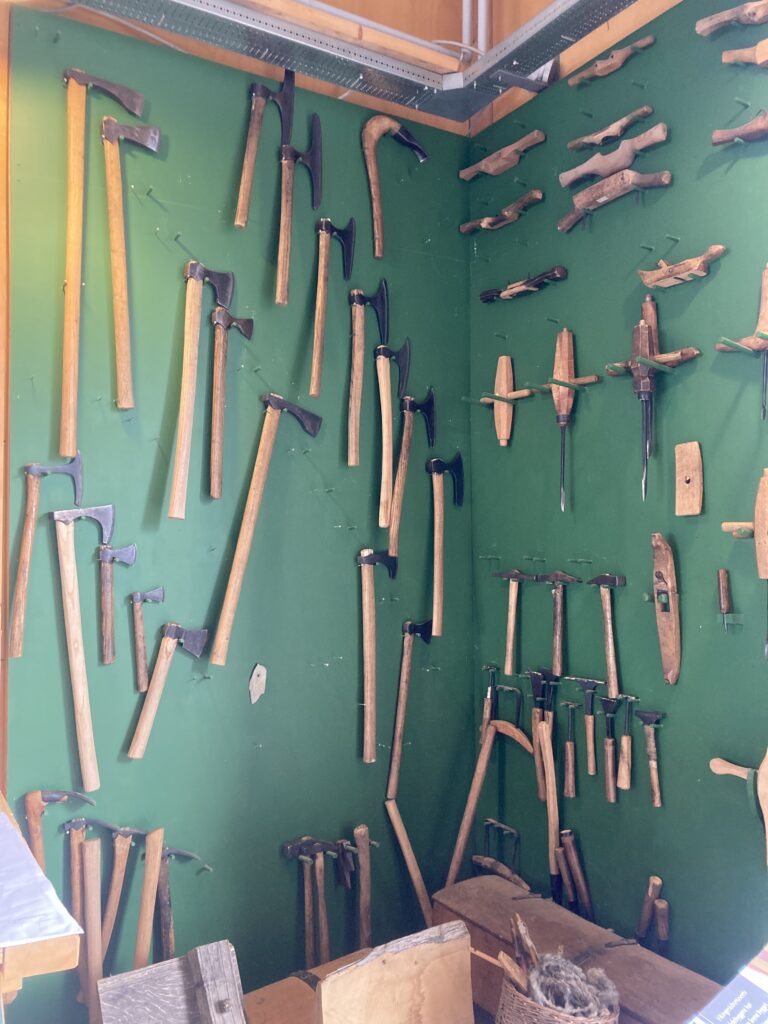









In the 1990s, ongoing marine archaeological research in the Roskilde fjord found the remains from another NINE ships, many from the medieval period, which is the largest find of this type in northern Europe. One of the ships found at that time is named Roskilde 6 (scientists are so creative), made in 1025 in the Viking Era, and is the longest Viking ship ever discovered. Fully re-assembled, it is 121 feet long and is believed to be the style of ship the Vikings would have used for transAtlantic voyages. All told, there are over 40 ships at the Viking Ship Museum shipyard, plus a wealth of other information, recovered artifacts, and fascinating photographs (as well as lots of things for kids to enjoy related to being a Viking, of course).

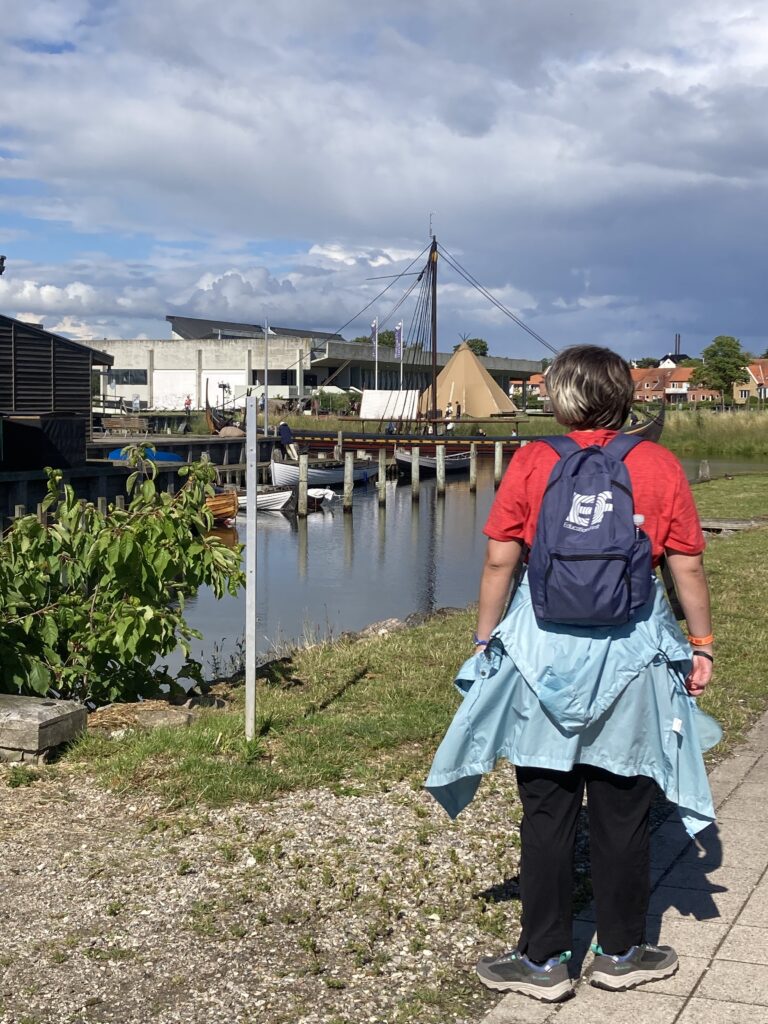





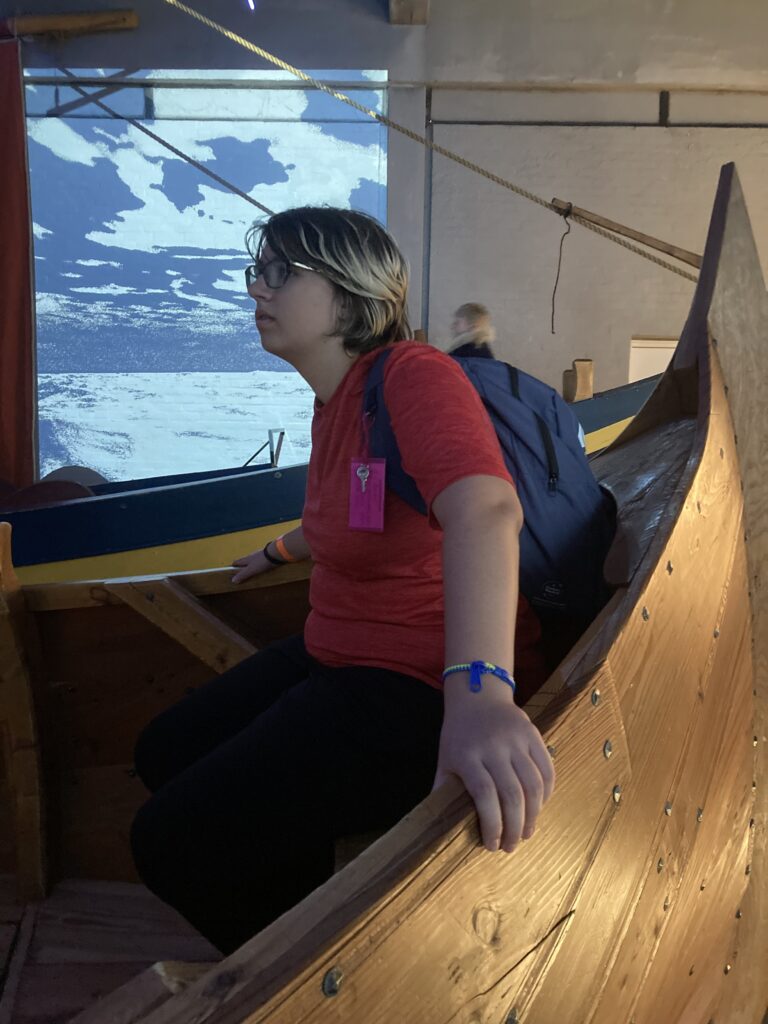

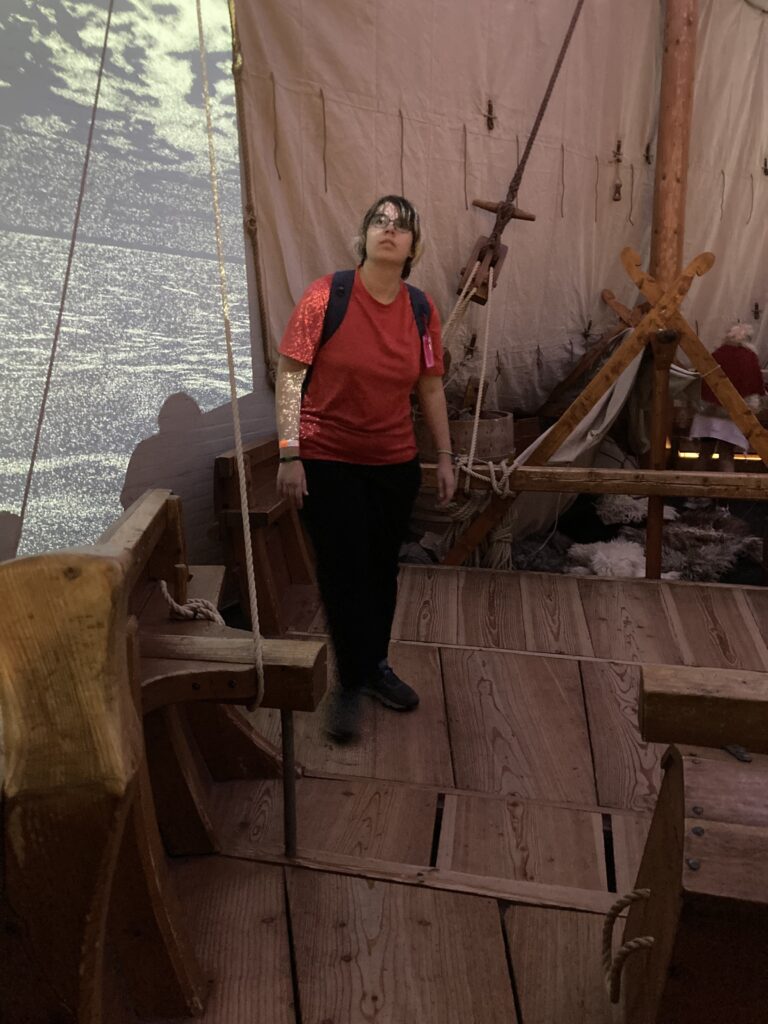
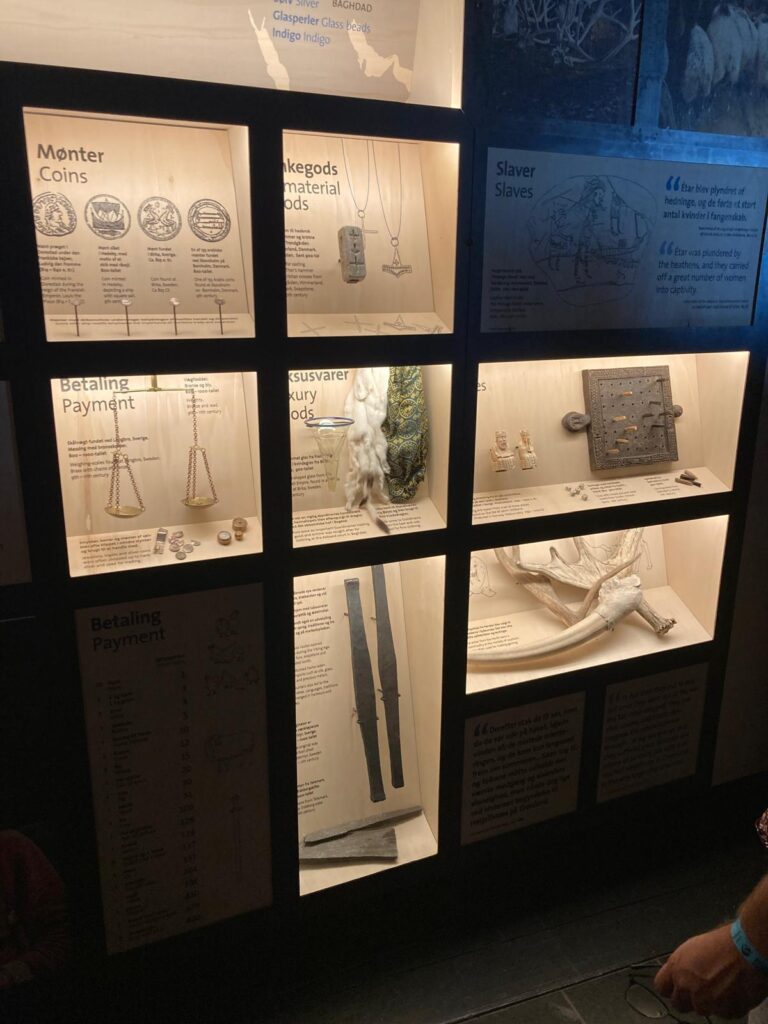









Naturally, as fate would have it, when it was time to go outside, it started raining again. Since we were still mostly damp, we just powered on with our rain coats. A sudden downpour came so we stopped in the little museum cafe to enjoy a couple warm drinks and dry shelter. Iben, our server, called us a taxi (seriously friendly and helpful people!) and we rode back to the train station. From there, we took the train to Copenhagen, and finally, to our hub hotel in the city.




My main take-away from Denmark so far is this: if you plan to venture outside of Copenhagen, either rent a car or allow for some flexibility in your travel schedule (trains come and go). Also, when outside the city, wear proper water-proof hiking boots and carry a backpack instead of a suitcase. If you are only visiting Copenhagen, then you will be fine without a vehicle and with any luggage you want to bring. Further, I recommend disregarding the historical weather information as the instability of current global climate seems to be rendering that useless. Instead, pack a small selection of a variety of clothing – inclusive a jacket and scarf, rain gear, shorts, short and long sleeved shirts, a hat, plenty of bug spray or cream, versatile shoes without any holes, and lots of socks. Layering continues to be a common Scandinavian fashion so pack accordingly. The locals we meet everywhere we go tell us the same thing: it always rains in Denmark. That’s something else to keep in mind.
The boats look amazing! Pretty ingenious of the Vikings to sink ships as a means of protecting their ports – a bonus for archeologists. I cannot imagine heading out to sea in a 121 foot boat…do you suppose they were searching for a less rainy climate? I am kidding. I do understand your frustration with the rain (very much like Portland’s fall/winter weather).
The boats are crazy. And I have no idea was made up of islands. Great pictures.